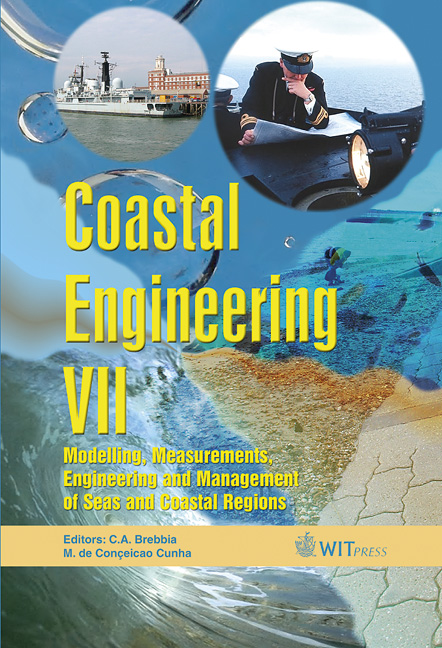Atmospheric Stability Parameters And Sea Storm Severity
Price
Free (open access)
Transaction
Volume
78
Pages
13
Published
2005
Size
1,025 kb
Paper DOI
10.2495/CE050251
Copyright
WIT Press
Author(s)
G. Benassai & L. Zuzolo
Abstract
The preliminary results of a statistical analysis of the atmospheric stability effects on the growth of sea waves are given in this paper. In unstable conditions (air colder than water) an increase of vertical mixing is experienced due to turbulence which makes the wind profile more uniform with height (deviating it from the logarithmic law). This circumstance increases the wind stress on the sea surface and thus gives rise to higher wave energy. In order to quantify the wave energy increase, the analysis of wave, wind and temperature data was performed, on the basis of the SWAN (Sea WAve monitoring Network) data set regarding both the Tyrrhenian and Adriatic Sea. The statistical analysis was first performed in terms of relative deviation of non-dimensional wave energy as a function of the Bulk Richardson Number in terms of the wind velocity U10. Then another stability parameter, the Monin-Obukhov length, was related to the friction velocity u*. This approach needed the implementation of a numerical procedure to estimate the set of Monin-Obukhov parameters, which account for atmospheric stability. Keywords: wind and wave statistics, wave energy, atmospheric stability, energy growth curves, Monin-Obukhov theory. 1 Introduction Recent studies highlighted the influence of some apparently secondary effects on the wave growth rate such as atmospheric stability. In unstable conditions (air colder than water) an increase of vertical mixing in the lower boundary layer is experienced as heat fluxes across sea surface contribute to the increase of turbulence. This effect causes the wind profile to be
Keywords
wind and wave statistics, wave energy, atmospheric stability, energy growth curves, Monin-Obukhov theory.





